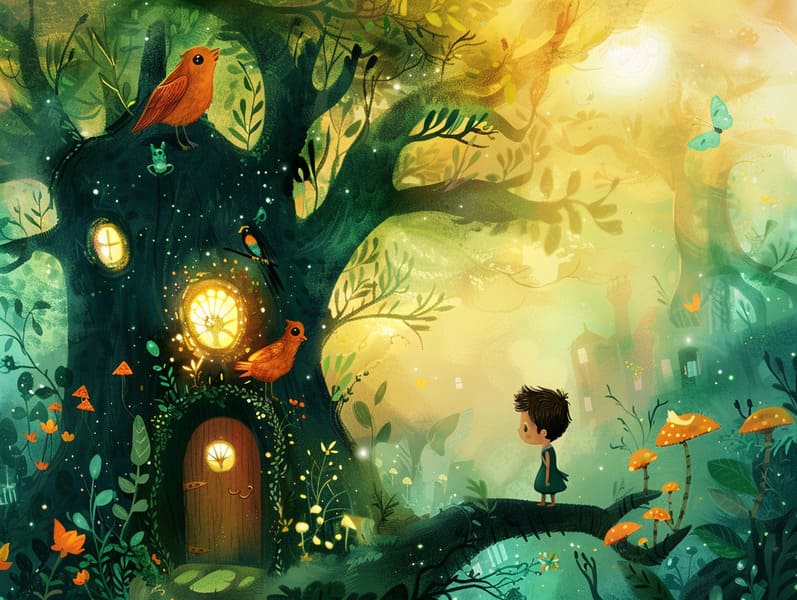The Genesis of Online Fairy Tales with the Unchanging Grace.
The Genesis of Online Fairy Tales with the Unchanging Grace.
Blog Article

Legendary fairy tales have ancient roots. These tales have been spoken from one generation to the next ages before they were ever transcribed. They originated from a variety of cultures, including American traditions. They were initially narrated among grown-ups, often carrying themes and messages concerning the societal norms and beliefs of the time.
The renowned Brothers Grimm, Jacob and Wilhelm Grimm, were among the first to collect and release many of these beloved tales. Their volume, "Grimm's Fables," included classics like "The True Bride," "The Bread Crumb Trail," and "The True Story of Snow White," which have since become mainstays in the world of beloved fairy tales. Similarly, Hans Christian Andersen's charming narratives, such as "The Mermaid," and "The Duckling that Could," have stolen hearts worldwide, guaranteeing their place in the pantheon of famous fairy tales.
Even though they are old, fairy tales remain as significant as ever, especially as kids' bedtime tales. These whimsical stories are now available in various formats, including richly illustrated books, enchanting animations, and digital storybooks.
Their persistent charm can be linked to several magical reasons:
Vital Lessons: Classic fairy tales often present important moral lessons. Tales like "The Tale of the Boy Who Cried Wolf" teach the virtue of honesty, while "The Race of the Tortoise and the Hare" stress the merits of determination and unassuming nature. These tales offer young readers clear distinctions between truth and falsehood, forming their moral compass in a kind yet lasting way.
Compassion and Knowledge: Traditional fairy tales frequently feature personalities facing difficulties and adversities, stimulating kids to connect with their struggles and back their triumphs. For instance, "The Story of Beauty and the Beast" points out the necessity of valuing inner qualities to realize the true nature of a being, cultivating kindness and insight.
Cultural Perception: Many classic fairy tales are saturated in the cultural contexts from which they originated. Delving into these fairy tales can provide enlightening views into different ways of life, fostering a sense of world appreciation and respect.
Fantasy and Imagination: The imaginative elements in fairy tales—enchanted objects—encourage children’s visions and dreams. These fairy tales carry readers to supernatural realms, unleashing inventive dreams and a sense of excitement that continues a lifetime.
Old fairy tales are not only enchanting but also edifying. They act as spellbinding tools in enhancing various mental and emotional abilities in little ones. When fairy tales are recited, they cultivate linguistic abilities by presenting new vocabulary and complex sentence structures. This practice also strengthens hearing abilities and attention span, as children pay close attention, anticipating to see what happens next.
Furthermore, discussing the themes and characters of traditional fairy tales can cultivate thought processes and logical thinking. Young readers are guided to spot patterns, make predictions, and know cause and effect. These deliberations also benefit young readers say their thoughts and feelings, promoting their emotional intelligence.
In today’s technological age, the prevalence of online storybooks has made these stories more attainable than ever. Online resources and digital apps offer large libraries of Grimm's fairy website tales that can be perused or listened through anytime, anywhere. Fairy tales spoken are particularly liked, extending an entertaining method for kids to take part in these magical stories. Spoken stories and read-out-loud stories take characters and settings to life, often complemented by delightful sound effects and soundtracks that augment the tale journey.
The unfading fascination of timeless fairy tales lies in their ability to evolve to modern society while maintaining their central messages. Contemporary adaptations of these fairy tales often include more representative characters and modern settings, making them pertinent to today’s audience. However, the underlying themes of spirit, goodness, and honesty remain unchanged, continuing to appeal to listeners of all ages.
Traditional fairy tales also offer a sense of ease and predictability. They offer a organized narrative with a straightforward beginning, middle, and end, often finishing with the ending of conflicts and the triumph of right over wrong. This predictability can be relieving for little ones, presenting a sense of unchangeability in an always shifting world.
Timeless fairy tales continue to enthrall and educate new generations, maintaining their attraction and meaningfulness in modern society. As children's bedtime stories, they put forth a perfect blend of allure and teaching, fostering moral values, empathy, and creativity. The prevalence of digital storybooks and the commonness of fairy tales narrated secure that these timeless narratives remain attainable to new generations.
By maintaining and making known these stories, we continue to esteem the rich tapestry of cultural heritage and cultural heritage. Whether you are experiencing a gorgeously illustrated book, discovering a web-based library, or playing an read-aloud story, the grandeur of children's fairy tales is always within reach. These stories illustrate of the unending effect of fairy tales and its ability to bring us together across time and space.
Regardless if you are delving into a vibrantly illustrated book, viewing a online library, or listening to an spoken story, the fascination of children's fairy tales is always within reach.
These narratives emphasize of the everlasting spell of tales and its ability to hold us together across eras and regions, weaving a spell that delights and instructs alike.